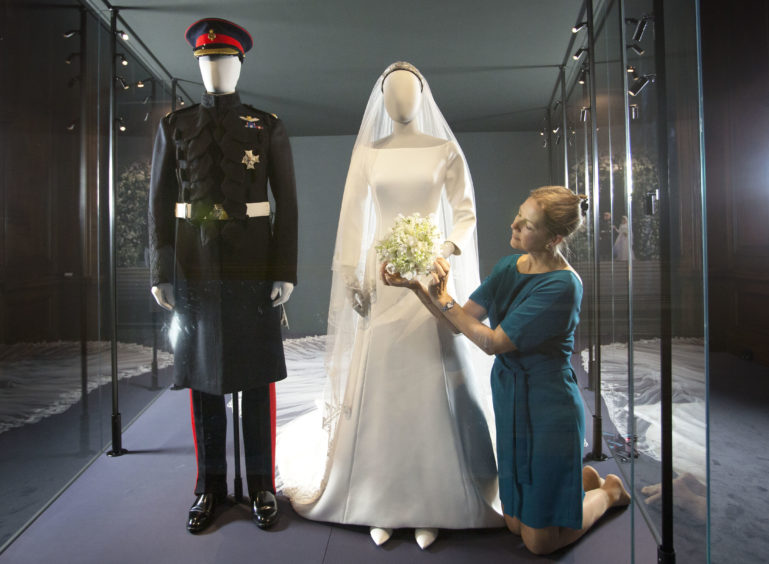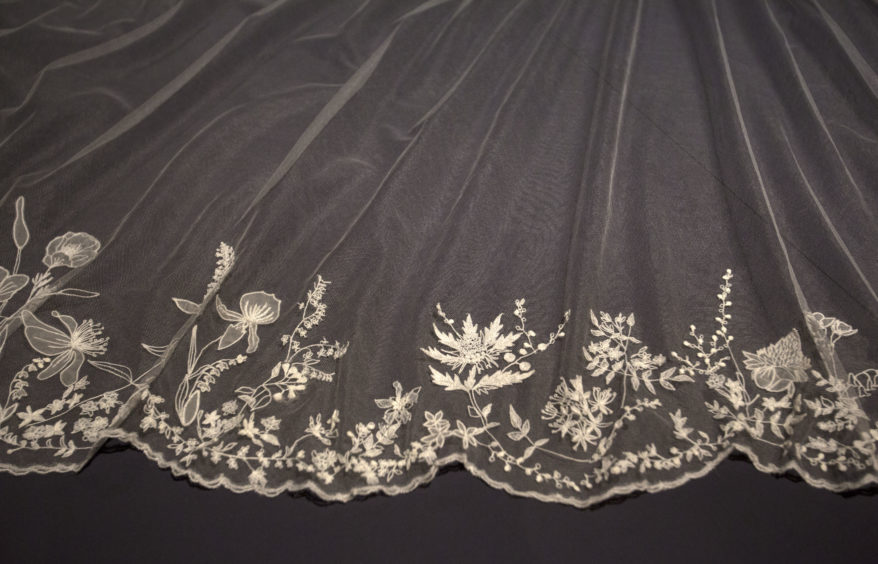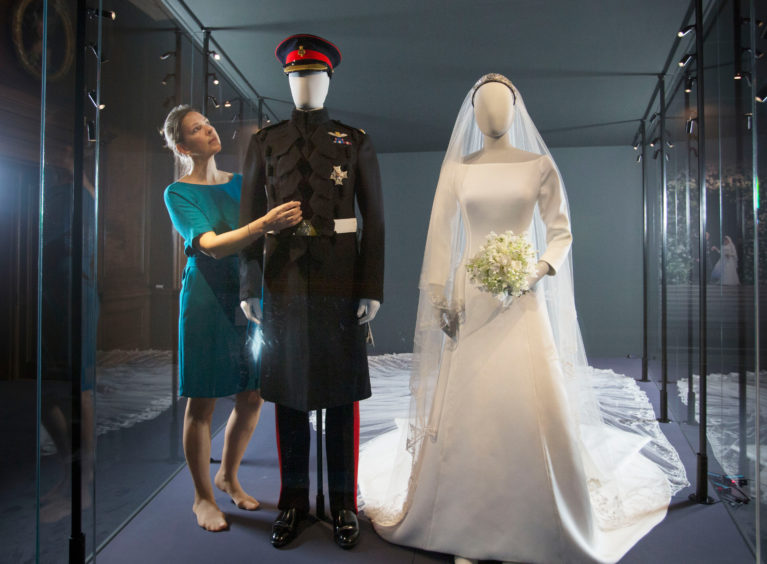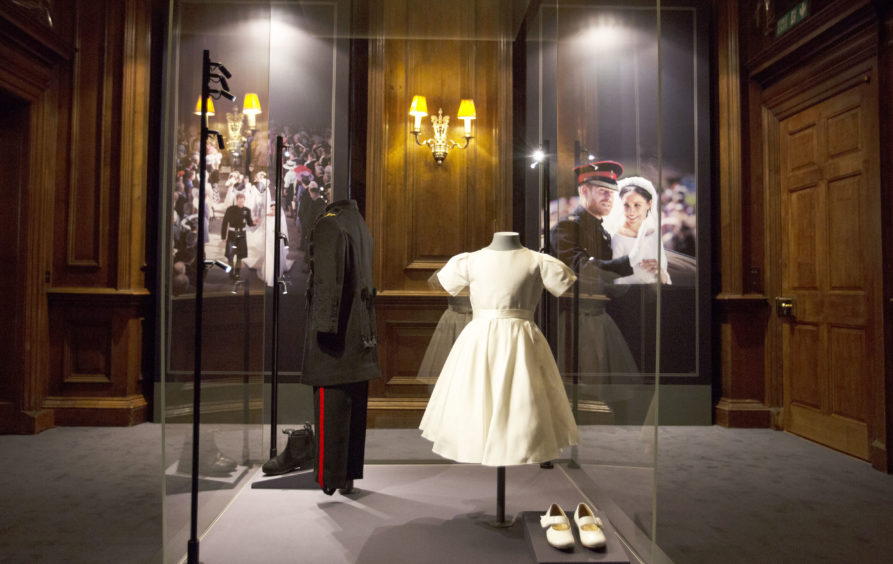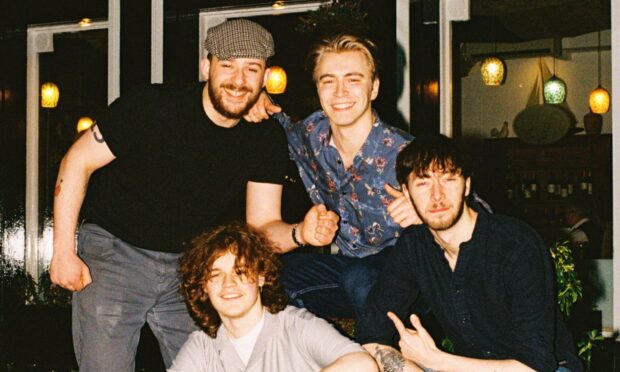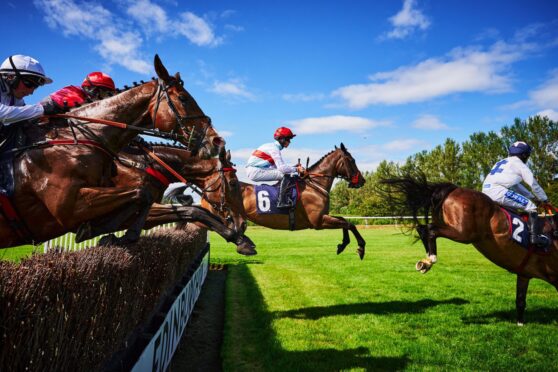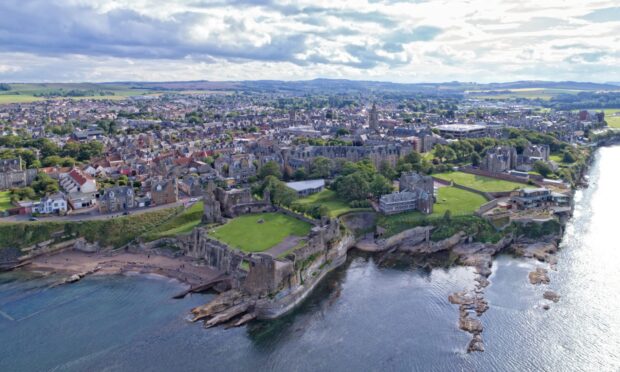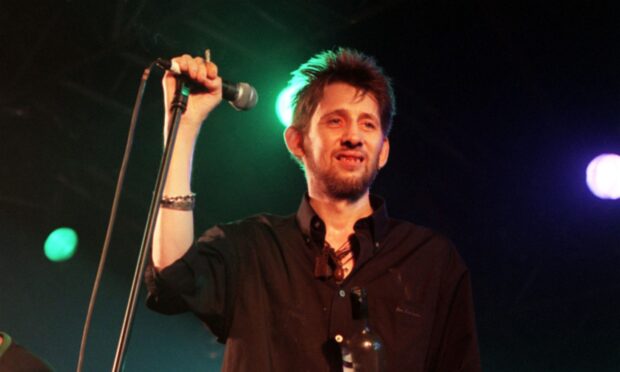Caroline Lindsay heads to Edinburgh to preview a very special exhibition – the wedding outfits worn by the Duke and Duchess of Sussex
From today, a visit to the Palace of Holyroodhouse in Edinburgh will include the special exhibition A Royal Wedding: The Duke and Duchess of Sussex, a display of Their Royal Highnesses’ wedding outfits, and the page and bridesmaid outfits of His Royal Highness Prince George and Her Royal Highness Princess Charlotte.
I headed to the capital for a sneak preview yesterday where Caroline de Guitaut, senior curator for decorative arts for the Royal Collection, explained the background to the exhibition which begins with some initial design sketches for the Duchess of Sussex’s dress and veil.
“The Duke and the Duchess wanted the wedding to feel very intimate and personal even though it would have a global audience,” says Caroline. “Inclusivity was also very important to them and they especially wanted to reflect the Commonwealth.”
The Duchess’s five-metre-long veil is made from silk tulle and embroidered with the flora of the 53 countries of the Commonwealth, including a thistle to represent Scotland, a reference to the Duke’s appointment as Commonwealth Youth Ambassador. The Duchess added two of her favourite flowers to the embroidered decoration: Wintersweet, which grows in the grounds of Kensington Palace, and the California Poppy the state flower of Meghan’s place of birth, California. Embroidered ears of wheat, symbolising love and charity,are symmetrically placed at the front of the veil, which is edged with embroidered organza flowers. It took the team of embroiderers hundreds of hours to create the design, washing their hands every 20 minutes to keep the tulle and threads pristine.
“Meghan wanted the veil to have the lightness of a billowing flower meadow,” says Caroline.
The veil was held in place by a diamond and platinum bandeau tiara, lent by the Queen. On public display for the first time, the tiara is formed as a flexible band of 11 sections, pavé set with large and small brilliant diamonds in a geometric design. At the centre is a detachable brooch of 10 brilliant diamonds. Both the bandeau and brooch were bequeathed to Her Majesty by her grandmother Queen Mary in 1953.
The Duchess of Sussex’s wedding dress with a boat-neckline bodice was created by the British designer Clare Waight Keller, artistic director at the historic French fashion house Givenchy.
“It is made from a bespoke double-bonded silk cady, and its graceful lines were achieved using six meticulously placed seams,” Caroline reveals. “The seams extend towards the back of the dress, from where the train flows in soft round folds, cushioned by an underskirt in triple silk organza.
“The fabric for the dress really is extraordinary – it has an amazing luminosity.
“The dress looks very simple but it involved a very complicated process to produce it,” she reveals.
“After Clare has made her initial sketch, the Givenchy atelier in Paris began working with the tulle to gradually get closer to the dress and how it behaves on the body. Having just six seams meant it was like putting together a very complicated jigsaw puzzle,” she continues.
The Duke of Sussex’s wedding outfit was the frockcoat uniform of the Household Cavalry (the Blues and Royals), specially commissioned for the occasion.
“The uniform’s single-breasted blue doeskin jacket has figured braiding of Regimental pattern on the stand-up collar and sleeves – the design incorporates many elements of British tailoring,” says Caroline. The trousers, officially called ‘overalls’, are made from a blue and black barathea, a fine woollen cloth, and are fastened by a leather strap and buckle underneath the boot. His Royal Highness has loaned an identical uniform to the exhibition.
As one of four pages, Prince George wore a miniature version of the Blues and Royals frockcoat with his initials embroidered in gold thread on the shoulder straps. Princess Charlotte, one of six bridesmaids, wore a high-waisted ivory silk dress designed by Clare Waight Keller. It has short puff sleeves and a double silk ribbon at the waist, tied in a bow at the back. Princess Charlotte’s white leather shoes were embroidered with her initials and the wedding date.
A replica of Meghan’s bridal bouquet made from artificial flowers has been created for the exhibition. The bouquet included sweet peas, lily of the valley, astilbe, jasmine, astrantia, sprigs of myrtle and forget-me-nots, the favourite flower of Diana, Princess of Wales. The myrtle sprigs came from a shrub at Osborne House on the Isle of Wight, grown from a cutting brought from Germany by Prince Albert, consort of Queen Victoria. Sprigs from the bush have been included in the bouquets of all royal brides since the 1850s.
“While the design of the dress is classic it also has a sculptural modernity, enhanced by the bateau neckline and three-quarter length sleeves.”
In a recording made for visitors to the exhibition, The Duke and Duchess (known as the Earl and Countess of Dumbarton in Scotland) discuss their plans for the wedding, including the choice of outfits, music and flowers. The Duchess says: “A great level of detail went into the planning of our wedding day. We knew how large the scale of the event would be, so in making choices that were really personal and meaningful, it could make the whole experience feel intimate.”
A Royal Wedding: The Duke and Duchess of Sussex is part of a visit to the Palace of Holyroodhouse until October 6 2019.
rct.uk or call 0303 123 7306.
